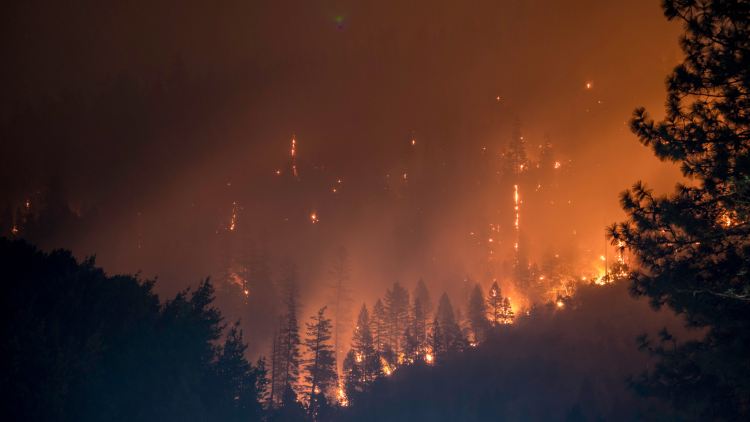Watch all the Transform 2020 sessions on-demand here.
A multidisciplinary group of researchers from the University of California, Irvine created a machine learning model to predict the potential of large wildfires from the time of ignition. The decision classifier model uses a single dataset to predict whether a fire will be large roughly 50% of the time, outperforming more complex models tested by researchers that rely on multiple weather variables.
Researchers trained the AI with air moisture data over the span of the average weather report using data from more than 1,100 fire events in Alaska between 2001 and 2017 from the Alaska Large Fire Database. Each fire was then labeled as small, medium, or large. The model is then able to predict approximately 40% of ignitions that lead to large wildfires that account for 75% of burned area during that time period.
Though the model is trained to predict outcomes of fires in forests primarily made up of boreal trees, the kind found in Alaska and northern Canada, such a model could be used to allocate resources for fire officials in parts of the western United States where wildfires are expected to increase in frequency as a result of climate change.
“This type of simple classification system could offer insight into optimal resource allocation, helping to maintain a historical fire regime and protect Alaskan ecosystems,” the report reads. “The huge fires and their impacts in recent years may warrant a rethinking of fire management; lands that have previously been limited suppression zones could now require increased suppression effort to maintain contemporary burning levels and mitigate impacts to humans and vulnerable ecosystems.”
June 5th: The AI Audit in NYC
Join us next week in NYC to engage with top executive leaders, delving into strategies for auditing AI models to ensure fairness, optimal performance, and ethical compliance across diverse organizations. Secure your attendance for this exclusive invite-only event.
As the report references, fire aerosols account for more than 300,000 premature deaths each year globally and make contributions to the global carbon footprint. One University of New Hampshire study predicts that the size of wildfire burn area could double by 2050 compared to levels seen in the 1990s.
The simpler approach achieved more accurate results than four other more complex machine learning classifiers in the scikit-learn package like multi-layer perceptron and gradient boosting. The findings were published Tuesday in the International Journal of Wildlife Fire.


